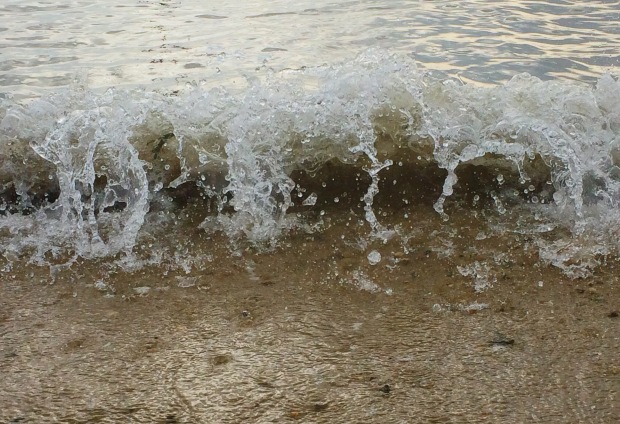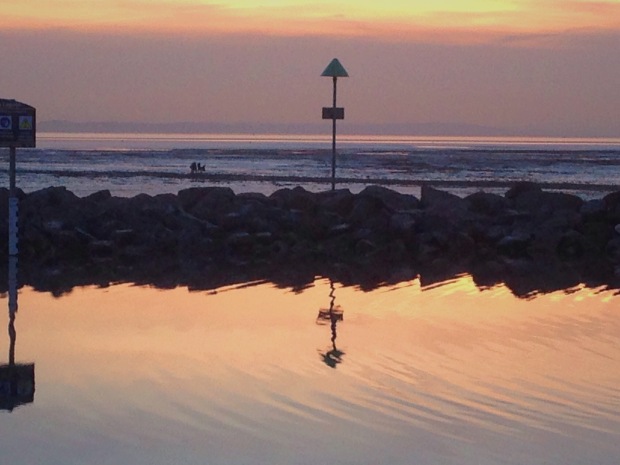Task 1 research: The Creative Media Sector
What is the creative media sector?
This is the media industry, productions are made creatively, there are many industries within this sector for example:
- Film
- TV
- Games
- Photography
- Advertisements
- Animation
- Fashion
- Publishing
- Radio
- VFX
- Music
- Interactive
There are 2 types of media, there is old media and new media, old media are industries such as books, newspapers, radio, music, fashion and photography, these were the main forms of media available in the 20th century. The printing press was made in 1440 and this began some the first forms of old media. Now we are in the 21st century old media has been overtaken by new media which is much more digital and technological. Examples of new media are TV, film, video games, interactive, advertisements and fashion, these are all new types of media that have just made a recent breakthrough in the 21st century. Some of these were here before hand however they have had many improvements since then for example the quality and resolution. These have brought people together because it gives the public something to talk about, it is a form of social ideology. Brand new sectors like interactive have been very successful in the media sector, a type of interactive that is well known is virtual reality gaming, this headset allows you to interact with a game where before you had a controller and a screen but now it actually feels like you’re in the game.
TV – TV first arrived in the 1950s, before that the only way to see something on screen was to go to the theatre or listen to the radio. The first thing that most people in Britain watched in their own homes was the Queen’s coronation, TV allows us to be entertained, but that all depends on what genres each individual person likes for example drama, comedy, crime, news, documentary, horror etc. An example of a TV company is Sky, they provide all forms of entertainment via the screen for example films, news and TV shows.

Films – This became popular in the 1890s, this was the first moving picture that was ever made, the Lumiere brothers were the first to discover what filming was. When people first saw it they were shocked and had to evacuate the cinema because they weren’t expecting it to happen as they haven’t seen anything like it before. It gives people a way to escape reality and go into an alternative world. A well-known film company is Disney, they make many films and have been very successful.
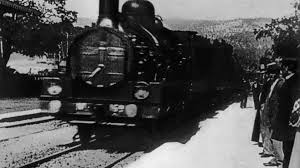
Music – Music became well-known and popular in the 1970s, this is because there were new genres of music people hadn’t heard before, music also gives a chance for people to escape reality and be in their own world. Music is the most popular form of audio entertainment.
Photography – Photography first started with photograms, this uses photographic paper, objects are put on top of the paper and then light is put on top and then it is put into chemicals to be developed and then dried to have a finished outcome. Now we have digital cameras which allow us to have more control over an image and there is no limitation on the amount of pictures you can take. A large photography company is Getty images, they take pictures of many themes for example portraits, landscape, still life etc.
Games -It first came out in the 1960s but this became more aware of in the 1980s, this was the first form of media which allowed people to control what they are doing and let them do their own thing rather than having no choice in what happens. The Atari Pong arcade machine was the one of the first game consoles made. A large company is the gaming industry would be PlayStation and within the industry there are also many game companies that produce the games for example Naughty Dog.
Radio – It was invented in 1895, Guglielmo Marconi was the first person to send and receive a radio signal, it happened in Italy. In the 1920s it soon became more widely used for sharing news around the world, it was used to give information about WW1 and WW2. A large company that is known for radio is the BBC. They have many radio channels which have a wide variety of different genres, BBC radio 1, 2, 3 and 4 are the main ones.
Interactive – this has become popular only recently through the use of videos and games, interactive videos are videos that allow the viewer to make the choices that lead to more decisions and then at the end there is either a good or bad outcome.
Publishing – this is an old type media because now most people use phones and other electronic devices to read so publishing still happens for books and newspapers but happens less than it did say 20 years ago.
Structure and ownership:
Private ownership – something that is owned by someone privately whether its a person or company rather than it be owned by a public one.
Public service media – media that is made for the purpose of benefiting the public instead of it just being for entertainment purposes. This can be shown through the use of TV.
Multinationals – Something that involves many nationalities.
Independents – Doing or solving something on your own with no one else’s help or guidance.
Conglomerate – Something composed of many different and unique bits or items that make up one and are grouped together.
Voluntary – Doing something out of your own free will.
Cross-media – Many ways or more than one way of promoting a project or product for example TV can be used, film, photography, motion graphics etc.
Diversification – Doing something which involves a diverse range of something for example a diverse range of people meaning there are people of different cultures and backgrounds.
Vertical and horizontal integration – Vertical integration means the production company has ownership of what they are making and this includes production, ideas, where it is placed and who can see it as they receive the profit. Horizontal integration means when one production company spreads over to other media industries, so this therefore means they can move forward with one particular part of their production.
Share of ownership – The ownership of a company is shared between people and have many people leading rather than just one.
Mergers and takeovers – Merger means the coming together of two companies and they are now one which means they are stronger than when they were on their own. Takeovers means when one company take an interest in another one maybe to use ideas from them and build their weaknesses.
Cross-media regulation – The ownership of many multimedia companies from a person or organisation. Examples of some media would be TV, film, radio, newspaper etc.
Sources of income – This means where the money is coming from. For example it could be coming from the public, charity or government.
Product diversity – This happens if you spread out so more business opportunities come up to sell something or get people interested.
Profitability of product range – the amount of money made in a specific period of time from selling a product or item.
Performance against financial concerns – this sees how well a company or business can continuously make money, the performance means how does the company deal with the fall in income.
Organisational objectives – this means setting goals during the organisation of something so it goes smoothly and everything is planned out beforehand so time is managed better.
Licences and franchises – A franchise is a large business that allows smaller companies to take their name in order to gain more popularity and also give the brand a good reputation as they are helping others in the same business. Licensing is a way of companies from other parts of the world create a relationship with other ones. (extend on definition)
Competitors – This is when companies or individuals go head to head to try and be better than the other so they gain more customers and popularity compared to the other one, by researching other companies your own one would be able to see the weaknesses they have so you can improve your own.
Customers – Customers are the people that consume what a company or business has to offer for example Netflix needs to be paid for monthly by the public, so the people that pay are the customers of the subscription.
National and global competition and trends – this means there is more and more competition when it comes to companies and businesses, this makes it hard for them to create new ideas and keep customers interested and get what they are paying for.
http://prezi.com/ff9byjnr5dou/?utm_campaign=share&utm_medium=copy&rc=ex0share
Reference:
- Emmanuela lecture
- Own knowledge
- Who invented radio?public.wsu.edu/~bryan.mclaughlin/Radio/Who_Invented_Radio.html
———————————————————————————————————————
Regulatory and professional bodies- Research for task 2
BBFC-British board of film classification, they regulate the film sector in media, manufacturing and servicing sections of the film sector. They enforce their regulatory power by having 2 examiners view the film before the release, their opinions are given to the senior examiner. However if they disagree other members of the board view the film, especially the Chief executive and Presidential team. They are also given specialist advice to make sure the film is legal and the content is not harmful to the viewers. The licensing legislation gives BBFC the power to regulate films, if it is not in the UK law then they will be cut from work, it they whole thing is illegal then they are rejected. If the bbfc didn’t exist there would be no rules on who the films are suitable for, for example a young viewer could end up watching an 18 film, which would be extremely inappropriate, also film content could be offensive to some people.

BAFTA– British Academy of Film and Television Arts. They help film and TV become better and improve in the media sector. They are a charity in the UK that give out annual awards for films, TV, video games and animation. To enforce their professional power they support and make film and TV. They help people to understand film and TV and inspire them to maybe make their own content and aid them to understand how much time production it take to produce a film, game or TV show. They provide opportunities for the public, they hold many events in the UK every year so more people become members and achieve their mission. They encourage professional and creative people to contribute to the film, TV and game industries. By having members they are able to help many people and give out a variety of opinions and perspectives. If BAFTA didn’t exist people wouldn’t know about film and TV as well as they do when it does exist, also many films and TV shows won’t be praised and we won’t be able to tell what are good about the films and the community they have now wouldn’t be around.
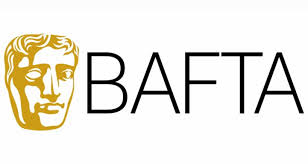

PEGI– Pan European Game Information, they regulate game industry in the media sector.
Regulatory issues: Affect media producers and consumers
PEGI also protects under 18s when they play and buy games, and this affects producers and consumers. It protects consumers because it tells them what game is suitable for who so young people don’t see anything inappropriate. It is involved with problems like protecting under 18s from violence, drugs, nudity etc. By having these warnings and age ratings it means it’s the consumers choice on if they should play it or not and whether the parents will allow them to play the game. When they rate the game on a suitable age group, it doesn’t mean they own the game because they rated it, it still belongs to the gaming company as they produced the game, e.g. Naughty Dog. (People aren’t as intrigued with indie games as they are with the big games that everyone knows about, consumers want continuity because they know that they will like the game as they have played many similar ones before, whereas with indie and alternative games they don’t know what to expect when playing and most of them don’t have ratings because they aren’t popular enough to be seen by PEGI.)
Piracy – taking someone else’s work and pretending or selling it as your own. e.g. selling a film that is still in cinema on DVD, this means the person filmed it at the cinema and put the footage onto a CD and make copies to sell illegally to make profit off of someone else’s work.
The bbfc protect under 18s by putting appropriate age groups on films and TV shows so people under 18 aren’t effected by things like violence, drugs etc. If a child sees an 18 film but there is the age group on the DVD then it is the parent of the child’s fault as the bbfc clearly stated who it is suitable for. Although the bbfc rate films it doesn’t mean it belongs to them, it belongs to the production company e.g. Disney or DreamWorks. By having age classification it means that the bbfc affects consumers by protecting what someone can watch, it also benefits the producers because if they didn’t put an age classification on their film and a child sees something inappropriate the company that made the film could get sued but most companies are too large to sue.
Ofcom: They regulate TV, radio and on demand video websites media sectors. They also fix telephone lines when they break down.They make sure that people all over the UK get the best communication they possibly can and so we don’t get fooled by scams. They are funded by fees by the industry for regulating broadcasting networks all over Britain. They enforced the Communication Act to make sure communications works well for people.
Task 2
For task 2 I have to research the BBC editorial guidelines, write 200 words defining the guidelines with 3 example where guidelines have been breached, find out how is the specific production was unethical and finally find out how were the editorial guidelines breached.
Ethical Constraints:
What are ethical constraints? This defines how people or certain demographics of people behave and acts. TV and film producers have to include trust, liability, privacy, truth and covering the public’s interests, these affect them on what type of productions they can make.
Social issues and sensitivities: the first thing that comes under this is gender representation. This means that if you were to produce a film or TV show you would have to make sure that you don’t offend someone by disrespecting their gender. This could include offensive comments or actions against a specific gender. The same goes for representation of religious beliefs
BBC Editorial Guidelines
The BBC’s editorial guidelines maintain the editorial standards which are high as the BBC is a trusted organisation. They have to keep this up in all of the media they produce and broadcast for example TV, film, radio etc. They focus on a large scale of standards e.g. harm and offence, accuracy, privacy, religion, fairness and there are many more that they cover to make sure no one is offended or harmed in any way. They are put in place because if they don’t they could get a lot of complaints about things that could offend someone when they are watching something they produced. If these guidelines were not in place then things would go sideways and there would be no BBC. They make sure all the content they make is not harmful to anyone so that everything runs smoothly and there are no problems with the public. These guidelines are approved every 5 years so there could be new rules when producing a TV show or film that have to be followed, by doing this it means that less problems crop up. Another reason these guidelines are put in place is because children and young people could be watching shows or films produced by the BBC so the regulatory bodies like bbfc for example have to classify their products so this means the BBC have to pay bbfc to regulate the things they make.

Top gear breached guidelines when Jeremy Clarkson said facial growths are “really ugly things”. People were offended by this because it a stereotypical assumption which hurt some people. The guidelines were breached because Clarkson made an unethical joke about facial growths, which may have caused harm to people with these growths some harm and it could have offended them. Clarkson compared a Prius camper van to people with facial disfigurements because of how ugly the van was. Investigations were made before and the BBC said that he hadn’t breached guidelines. However the show’s executive producer said that the part of the show was scripted and had already been through the BBC’s systems, which shows that they should’ve done something to stop that being said. The show had breached the harm and offence guidelines and did not meet up to the standards of the BBC and it showed the public that the BBC’s perspective on disability is negative and disrespectful. Statistics say that 137 people complained about that specific episode of Top Gear. This offended many people with facial disfigurement because they felt like they were being judged for what they look like. This changed people’s attitudes towards facial disfigurements.

http://www.bbc.co.uk/news/entertainment-arts-19785998
On BBC radio 1 there was a Harry Potter day for the release of Harry Potter and the Half-Blood Prince. There was a breach because “undue prominence” was given to the film. I think it shows that the BBC were saying that before this particular film of the entire franchise was made it was unimportant as they were saying that the 6th film was the one that made it noticeable. It was breached because there was unfairness and it could have offended the directors, producers and the whole team that produced the franchise. Also the BBC trust said references to the film “were not used sparingly”, which means it could have been spoilt for people who haven’t seen it and it was not appropriate for children. The BBC trust said to Radio 1 that they need to take the opinion of the public into account as they have many listeners from all over the UK. They also said that they need to be more aware of younger listeners because they shouldn’t be hearing inappropriate or violent language. Radio 1 breached guidelines on undue prominence and endorsement.

https://www.theguardian.com/media/2010/jun/24/harry-potter-day-radio-1
In 2007 Panorama breached guidelines because they didn’t do research correctly on people with ADHD (Attention Deficit Hyperactivity Disorder). The facts they gave were misleading to the public which made people complain to the BBC about the mishaps. They effected a lot of the public because false information was given and it would affect people with ADHD too. The BBC trust said that the facts were not deliberately placed wrongly so they were allowed to carry on with the show. They said that the team didn’t properly understand the information they researched. They breached the guidelines of impartiality because the producers of the programme were not accurate and open-minded toward the information they found and the programme failed to keep up with standards. The consequences that occurred to the people that breached the guidelines are the makers of Panorama had to apologies in a future episode so they don’t get an even worse reputation from what they had done to breach the guidelines. The BBC trust said that the show didn’t purposely put incorrect facts because the show producers knew it was wrong, they meant no harm to the public, however the facts they use should’ve been checked to make sure they are correct before they are put on TV.
http://news.bbc.co.uk/1/hi/entertainment/8534718.stm
Legal Constraint: This means laws that are put in place stop certain things from happening, for example being in a location where your not supposed to be or being a public liability which means disrupting the public. You could get into trouble for breaking these rules, like being fined. This has to be known before starting any production because you wouldn’t want to get into trouble, whether its for a film production, a photo shoot etc this always has to be considered.
There have been many acts that have taken place so new laws are apparent (the links show where I retrieved the information):
The Broadcasting Act 1990 – This act was put in place for people to make legal work via electronic objects, this includes radio, TV and sound forms.
Official Secrets Act 1989 – This act is part 2 of the 1911 official secrets act, it is a crime if you take information from someone who is a former member of security and intelligent services.
Obscene Publications Act 1959 – This act extended the boundaries of obscene work which included films and videos, before this it was only applied to films that showed inappropriate content, the film has to be judged as the whole film and not be individual scenes that are more obscene than others, obscene means sexual or indecent content or portrayal.
Films Act 1985 – This act ended the Eady Levy system which was made in 1951, the levy system made a way to tax the box office and this was the BFI (British Film Industry) but this system was not successful. This was a new way of taxing films.
Video Recordings Act 1984 – Video was first used in 1978 and at this point there were no laws on this, but then people saw that this would effect the amount of money film and cinema makes so this was used for small budget films, they were not regulated by organisations like bbfc to be checked before they went public which meant some of the content was graphic. This then meant that tapes, disks etc had to be labelled with age restrictions.
Race Relations Act 1976 – This is when other people are not treated the same as others due to race, religion, beliefs, ethnicity and colour. This made people treat each other with more respect and show no hate towards a specific race.
Human Rights Act 1998 – This means you can defend your own rights and yourself when your in court and protect yourself from organisations, everyone must be treated with respect, fairly and equally. This applies to all humans whether you are rich, poor, young or old, this act protects us.
Licensing Act 2003 – This act was put in place by the UK parliament, it is there to licence premises in England and Wales, these licenses allow you to do certain things like sell alcohol or regulate forms of entertainment.
Privacy Law – This keeps things away from other people so they don’t know what that thing is. It could be keeping a company private or an organisation.
Copyright – This is a right that is given to the person who owns the product or production they have made for a certain number of years, so if people try to copy it they will be fined or sued because they stole someone else’s work. This could be material like music, film, text etc.
Intellectual Property Law – This means that other people won’t steal your work, this could be a brand, logo, patents can be used to protect this product and gives you the right to legally take them to court if they have done this. Trademarks can be made to also protect your idea or brand so other people will know that its yours and will know if someone else has taken it.
Libel Law – This is something that can effect another person’s reputation, this can be done with writing, pictures, signs etc so damage someone and there place in a business area.
Task 3- Essay: Regulatory and Professional Bodies
For this task I have to talk about how 1 regulatory and 1 professional body functions, how they maintain standards and does it work? how they are funded, how the source of their funding affects their organisation, who they protect or help and why its important an lastly how it is related to the content and creativity.
The regulatory organisation I’m going to be talking about is the bbfc and the professional organisation is the BAFTAS. A regulatory body is an organisation that regulates something so consumers don’t see content that could offend them, this could be in film, TV and even advertisements. A professional body is an organisation that has no funding consumer’s individual interests so they engage with the profession and it becomes a public interest.
The bbfc (British Board of Film Classification) regulates films, they tell people what films they can and can’t watch due to the content in the film. Their job is to make sure that younger people don’t see inappropriate content, for example violence, drugs, swearing and nudity. They rate films and classify them into groups, they are U, PG, 12a, 12, 15 and 18. This lets a consumer know what films are suitable for them and also younger people. They do this by having two examiners watch the film and give their opinions on what age it should be classified as and then it is given to the chief examiner. If they can’t decide or disagree then other members of the board must give their opinions to have a wider range and more accurate classification. If they rate a film wrong then they could receive many complaints and problems, some examples are Jaws, which was originally rated PG and was later changed to 15, the drastic change is why the bbfc received many complaints about the film not being classified properly, also Coraline, an animated film was rated PG and people were saying is should’ve been a 12 as there are dark scenes and creepy aspects of the film. Another film incorrectly classified is The Boy in the Striped Pyjamas, it was a 12 but the fact that it’s about the Holocaust made the film be in the age 15 group. If the bbfc didn’t exist then young people would be watching a lot of content that is not suitable for them at all. Also it could offend some people to due to religion, race and sexuality. Also the parents of the children will have check the film for them because they would only have hints of what the film is like from the trailer and mini clips, consumers wouldn’t have anyone to trust as the bbfc are a trusted organisation and know what the standards of their job are.
They maintain standards by being approved by the public’s expectations. Their main standards are to protect children and some adults from offensive and inappropriate content and to give consumers, especially parents the decision of what their kids should watch based on the guidelines of the bbfc. Sometimes their standards work for example when you go to watch a movie with an age rating of 15 at the cinema, the staff check ages so people don’t see harmful content, however when a film is purchased on DVD or watched online on streaming websites like Netflix or Amazon Prime its in their own hands to decide to watch a film or TV show with a higher age rating than your actual age. For young children it up to the parents to control what they see so if they watch a PG film they will have to watch with a parent or guardian.
The bbfc are not funded by government, they make their money by the fees they charge when a film company wants their film to be classified so it is able to go out to consumers and so they don’t get a bad reputation because they didn’t classify their film. They are funded by the film and TV sector. If they didn’t have this system they wouldn’t be able to classify films and companies would be sued or get many complaints about not having age ratings on their.
The source of their funding would affect the organisation because if they didn’t have film and TV companies paying to get films rated then they wouldn’t be able to rate other films and no films would allowed to be watched. Considering this is only the bbfc, the rest of the world will be able to watch he films produced as they still have a good system of funding. America’s film classification organisation is called the Motion Picture Association of America, they rate films differently to the UK, they only have 5 ratings however the UK has 6. So if for some reason people didn’t want their film to be seen in the UK then the bbfc wouldn’t be asked to rate it so then they wouldn’t receive an income so then they would go out of business. An example of a film that was rated differently to another country is There’s Something About Mary which was rated 15 in the UK but in France it is tous publics which means suitable for all, this is wrong as there is strong language and sexual content.
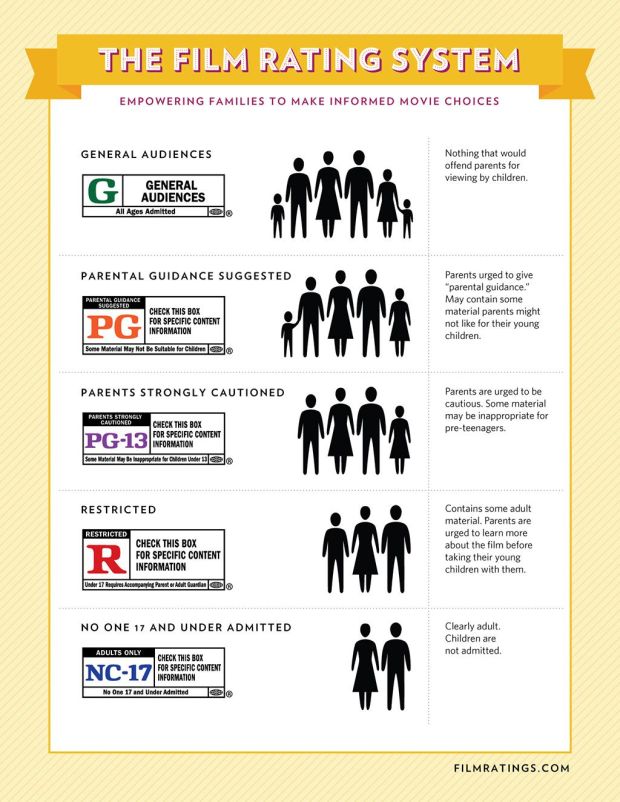
The bbfc protects consumers of films in the UK, especially the younger generation. This is important because it confirms that children don’t see content not suitable for them. They help people in the UK, the bbfc is the organisation that allows the consumers here watch films that come from all over the world, a majority of films are produced in America so the bbfc lets us watch their films for example The Matrix, It’s a Wonderful Life and The Hunger Games. This shows they have been around long because there are examples of historical films as well as contemporary.
This is related to consumer choice because this informs them about what films are appropriate for their age group so they would have to choose a film within the age classification.
The BAFTAS (British Academy of Film and Television Arts). They help film and TV become better and improve in the media sector. They are a charity in the UK that give out annual awards for films, TV, video games and animation. To enforce their professional power they support and make film and TV. They help people to understand film and TV and inspire them to maybe make their own content and aid them to understand how much time production it take to produce a film, game or TV show. They provide opportunities for the public, they hold many events in the UK every year so more people become members and achieve their mission. They encourage professional and creative people to contribute to the film, TV and game industries. By having members they are able to help many people and give out a variety of opinions and perspectives. If BAFTA didn’t exist people wouldn’t know about film and TV as well as they do when it does exist, also many films and TV shows won’t be praised and we won’t be able to tell what are good about the films and the community they have now wouldn’t be around. They maintain standards by providing help and guidance for the younger generation that are interested in film, TV and games. They also hold challenges for example Young Game Designers which the children can participate in to give them experience and an idea of what the media industry is like. They support talent by giving out awards to specific films, TV shows, games and individuals in the category.
They are not funded but the government so therefore have to rely on the memberships they provide, trusts, donations and foundations to fund their organisation and keep it sustained. If they didn’t have this income from the public then this awards and professional organisation would not exist, this will mean praise won’t be given to hard working people that contributed to making a film, TV show or game. Also young people wouldn’t have help with learning about the media. The source of their funding affects the organisation because they could lose their source of income easily which means maybe some people don’t trust the organisation.
They help many people e.g. people that are interested in media and film, TV and games groups. It also helps the public to come together as a community by discussing what films, TV shows and games they like, so there is a positive social aspect. Finally they help the film, TV and game producers, directors, actors etc realise and know how good their production is by giving an award, its conformation to them to say well done for how much effort went into making the production.
This is related to creativity, whereas the bbfc is more focused on the content they let consumers see, but the BAFTAS provides creativity to consumers for example young people and awards people for their creativity.
There are many jobs in media:
- photographer
- tv/film producer
- graphic designer
- interactive designer
- director/editor/sound
- advertiser
- Director of photography
These are some of the job opportunities that are available in the media sector. These are creative jobs that don’t require desk work and are more practical.
Photographer:
To be a photographer in general the skills required are:
- understanding of composition, design and technical abilities
- organisation and time management skills
- skills in communication, ICT and marketing
- Pay attention to detail
There aren’t any set permanent entry requirements for this. you will need a portfolio of work to show the interviewer the work you have and what you are capable of. A qualification in photography would also be needed to enter for a better chance of getting the job but is also possible without one as many photographers taught themselves. For a starting job in this field you would have to start off as an assistant or a smaller job in the work place, this will likely be a position for an apprenticeship. There are also freelance photographers that get there own opportunities and jobs to get paid.
There are many jobs within photography as there are many themes to take pictures of for example:
- Nature
- Food
- Sports
- Events and occasions
- Portraits
- Street photography
- Architectural
- Fashion
- Advertising
The day to day tasks could include:
- discussing projects with clients to agree on a brief
- finding locations to shoot in
- getting the equipment and choosing the right settings for lighting
- taking images and making compositions
- using editing softwares at industrial levels
- colour correcting and checking the quality of the image
- selecting the best image for the client
- marketing and making sure the business runs smoothly
Graphic Designer:
A graphic designer is someone who creates either an image or piece of artwork, it is usually digital. Their work is used in for advertisements, brochures, visual branding, magazines, website designs, packaging and displays. There is no set entry requirements. This is what we see everywhere for adverts about different brands and products, they produce posters and other forms of viewing to persuade the audience to look and draw them in. This is a key tool in advertising
To enter for this job you will need:
- preferably a foundation degree, HND or a degree in graphic design
- a portfolio to present your work to the interviewer and show what you can do
- some work experience in the subject, especially in a live project
- you could get an apprenticeship for this job
The relevant skills that you will need are:
- excellent communication, ICT and English skills
- sharp attention to detail
- presentation and design skills
- organisational and budgeting skills
The job could be in print or online, in marketing, publishing, product or games design. This is what the job includes:
- discussing the clients requirements and developing creative ideas
- keeping track on money and deadlines
- making draft ideas and presenting them
- prepping designs using high quality softwares software
- present pitch to clients to receive feedback and approval
- plan out a final layout
- give explanation to photographers, printers, manufacturers or game creators
- keeping up to date with latest design trends and development softwares and tools
Video Editor:
A video editor is someone who edits clips, images, sounds and put them together to make a film or TV show. This is a very important job because this is how everything is brought together to make a complete video. There are no set requirements but the entry requirements are as follows:
- experience with editing softwares e.g. Premiere Pro, Final Cut Pro, After Effects etc.
- get work experience at a production company
- make and edit a charity, student or community film
- move in from an entry level role, so start at the bottom and work upwards
- present a showreel of all the videos you have edited and created
- May be useful if you have a HND, foundation degree, degree or postgraduate course in film/TV studies or film, video and media production
The skills required are:
- good time management and visual awareness
- both practical and creative skills
- extreme attention to detail
- to be able to work under pressure and meet deadlines
- patience and concentration
- ICT skills
You will be a part of the post production team, working with the material that the film and sound crew have collected and add effects to it and put it together in order. The types of videos that you will be working on could include music videos, films, TV shows and adverts. The day to day tasks will be:
- agreeing on final look of the video
- transferring the film and footage
- using editing softwares
- keeping the storyline of the production in mind
- creating a rough piece
- digitally improving the quality of the footage
- putting the work onto a DVD or make them available online
Task 5
If I were to hypothetically apply for a job as a freelance nature photographer at the National Geographic I would need:
- Possibly a degree in photography, science, journalism, fine arts, sociology, psychology or anthropology
- A degree in discipline will be better than one in photography according to the National Geographic
- Freelancers need at least 5 years experience in photojournalism, wildlife, underwater, nature or aerial photography
- Mix of interests, abilities, photographic style and balance
About National Geographic:
The National Geographic allows people to get deeper into stories that are important. It holds the world’s best scientist, photographers, filmmakers and journalists, with these people they globally entertain the public through the use of TV, magazines, children’s media, expeditions, travel, maps, books, products, location-based entertainment and experiences. They also have many engaging social media platforms, from my own knowledge I know that have their own page on SnapChat, which shows facts and information about animals, nature etc.
Questions I would ask:
- would I need to travel anywhere abroad?
- Will I be working with others?
- Will there be any projects to focus on?
- How long are work hours?
For any interview I need to show/have:
- Confidence but not too much
- Eye contact with interviewer
- Firm hand shake
- Ask questions to show interest
- Portfolio of all the work you have done
- Wear appropriate clothing, no tracksuits, trainers, jeans etc
- Show that you know the company
- Practice before the interview
- Take notes and make notes
Reference:
http://www.nationalgeographic.com/
Task 6
Portfolio – these are some pictures I have taken and edited in my spare time:




